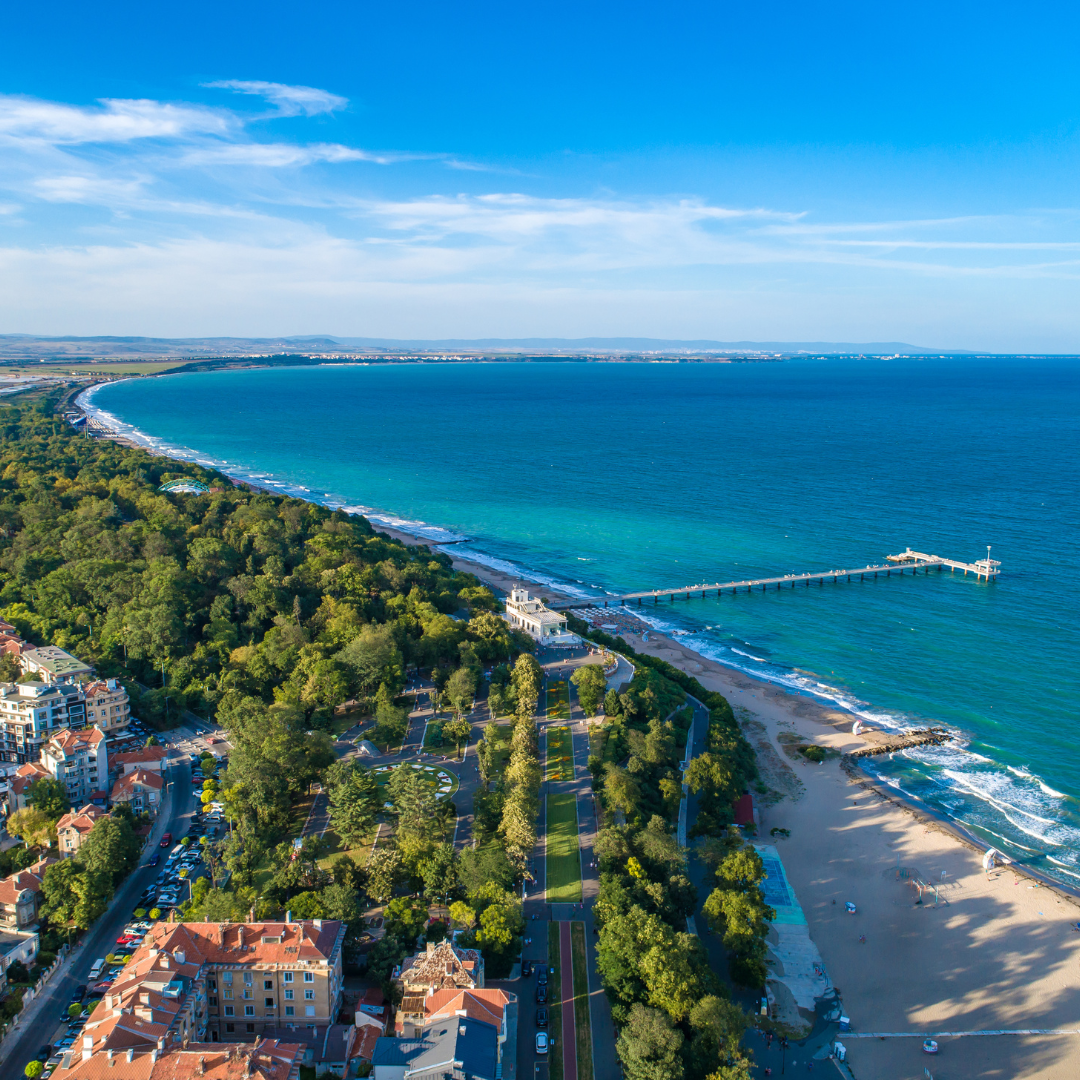Bulgaria’s Ancient Seaports: Nessebar and Its Millennia of Maritime History

The Black Sea coast of Bulgaria is adorned with tales of antiquity, where millennia-old stories rise from the land and echo across the waters. Among these narratives, one seaport stands out: Nessebar. This ancient maritime hub, a bridge between epochs, is a testament to the region’s vibrant historical tapestry.
The Birth of Nessebar: Origins and Antiquity
Nessebar, known in antiquity as Mesembria, traces its origins to the end of the Bronze Age. Founded by the Thracians, the town soon caught the eye of enterprising Greek settlers in the 6th century BC. They expanded the settlement and endowed it with the classical Greek charm visible in the ruins today. Over the centuries, this seaside town became a crucial port, bearing witness to the ebb and flow of empires, from Thracian to Greek to Roman.
Its strategic location and fortified walls made it an attractive maritime hub. The treasures unearthed, including coins, sculptures, and inscriptions, narrate a story of a thriving city that was a nexus of trade and culture in antiquity.
Byzantine Echoes: Churches and Architectural Gems
Nessebar’s architectural landscape is punctuated by its churches, reflecting the Byzantine era’s spiritual fervor. Structures such as the Church of St. John the Baptist, with its distinctive cylindrical dome, and the Church of St. Stephen, adorned with breathtaking frescoes, exemplify Byzantine craftsmanship and artistry.
These churches aren’t just places of worship; they’re repositories of history. Their walls have withstood time and provide insights into the religious and cultural shifts that shaped the region, from Paganism to Christianity, and the various denominations that followed.
The Evolution of a Seaport: Trade, Battles, and Cultural Exchange
Being a vital seaport, Nessebar was at the crossroads of civilizations. As merchants docked their ships, they brought with them goods, ideas, and cultures. However, this lucrative port was also coveted by empires. From ancient naval skirmishes to medieval sieges, Nessebar’s history is painted with battles that shaped its destiny.
The cultural exchanges are evident in the town’s architecture, art, and even cuisine. Each layer, be it Roman, Byzantine, or Ottoman, added a unique flavor, creating a cultural mosaic that stands testament to the town’s rich heritage.
Nessebar’s UNESCO Status: Recognizing World Heritage
The UNESCO World Heritage designation is one of the highest accolades a site can receive. It signifies a place’s value not just to the local or national community, but to humanity as a whole. Nessebar, with its sprawling history and architectural tapestry, was inscribed as a UNESCO World Heritage Site in 1983.
This recognition is not just an honor; it is a responsibility. It entails a commitment to preserving and maintaining the site’s integrity for future generations. Nessebar’s inclusion speaks volumes about its unique character, reflecting a blend of Thracian, Hellenistic, Roman, Byzantine, and Medieval layers of development. The town’s myriad churches, each a masterpiece in itself, stand as eloquent testimonies to Byzantine and Bulgarian medieval architectural traditions.
Moreover, the UNESCO status bolsters tourism, drawing history enthusiasts, scholars, and general tourists alike. It has amplified efforts to maintain and restore the site, ensuring that Nessebar’s rich past continues to echo into the future.
Maritime Museums: Delving Deeper into Nautical History
If Nessebar’s streets and ruins are its open-air museums, then its dedicated maritime museums are the encyclopedias that detail its seafaring history. The tales of ancient sailors, merchants, and maritime battles come to life through meticulously preserved exhibits.
The Nessebar Maritime Museum, in particular, stands as a beacon for nautical enthusiasts. It presents a holistic journey through the town’s maritime exploits. Ancient amphorae that once held oils and wines, retrieved from shipwrecks, provide glimpses into trade practices. Detailed naval maps, ship anchors, and marine equipment showcase the advancements in navigation and sea exploration over the centuries.
These museums don’t merely display artifacts; they weave narratives. They highlight Nessebar’s role as a pivotal port and a melting pot of cultures, ensuring that its maritime legacy is not forgotten but celebrated and studied by generations to come.
Modern Nessebar: Bridging the Ancient with the Contemporary
Nessebar, today, is a symphony of contrasts. While its ancient walls, churches, and fortifications narrate tales from millennia past, its modern establishments resonate with the rhythms of today. This fusion creates a dynamic and enchanting environment, making Nessebar an alluring destination for various travelers.
Alongside remnants of ancient temples, one finds bustling cafes serving Bulgarian delicacies. Artisanal shops, selling intricate crafts, sit nestled amidst Byzantine ruins. Contemporary art galleries, music festivals, and theatrical performances juxtapose against the backdrop of an ancient amphitheater, creating a harmonious blend of the past and present.
This coexistence is Nessebar’s strength. It offers a unique proposition to visitors: to touch the ancient while living in the moment.
Nearby Attractions: Exploring the Surrounding Coastal Areas
While Nessebar is the jewel of the Black Sea coast, the surrounding areas glitter with their own unique charm. A short journey from the town leads travelers to Sunny Beach, a modern resort known for its golden sands and vibrant nightlife.
Further along the coast, one discovers Pomorie, renowned for its therapeutic mud baths and salt pans. The ancient town of Sozopol, much like Nessebar, is steeped in history, with its wooden houses and narrow streets echoing tales of pirates and sailors.
The natural wonders too beckon. The Strandzha Natural Park, the largest protected area in Bulgaria, offers trails amidst dense forests, revealing Thracian tombs and sanctuaries en route.
These nearby attractions amplify Nessebar’s allure, providing a multifaceted experience of history, nature, and modern relaxation, making the region a must-visit in the heart of Bulgaria.
With its cobbled streets winding through epochs, Nessebar stands as a beacon of Bulgaria’s maritime heritage. As the waves of the Black Sea gently caress its shores, they whisper tales of sailors, merchants, warriors, and artists who once called this port their home. For the modern traveler, Nessebar isn’t just a destination; it’s a journey through time, where every stone and every wave has a millennia-old story to tell.


